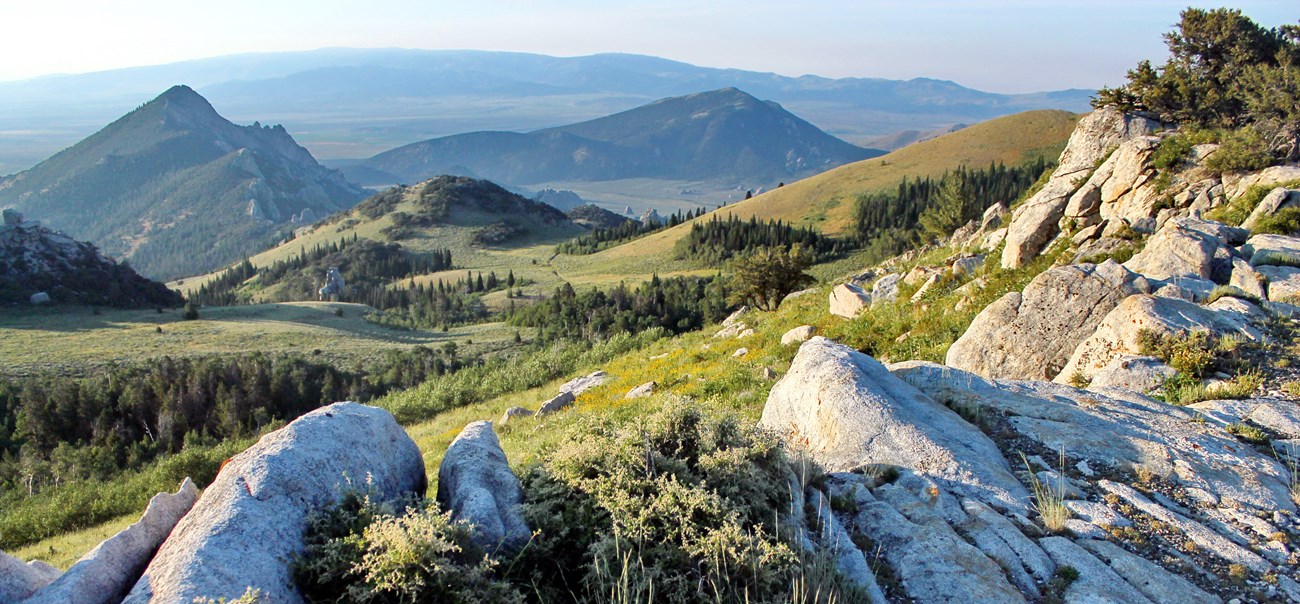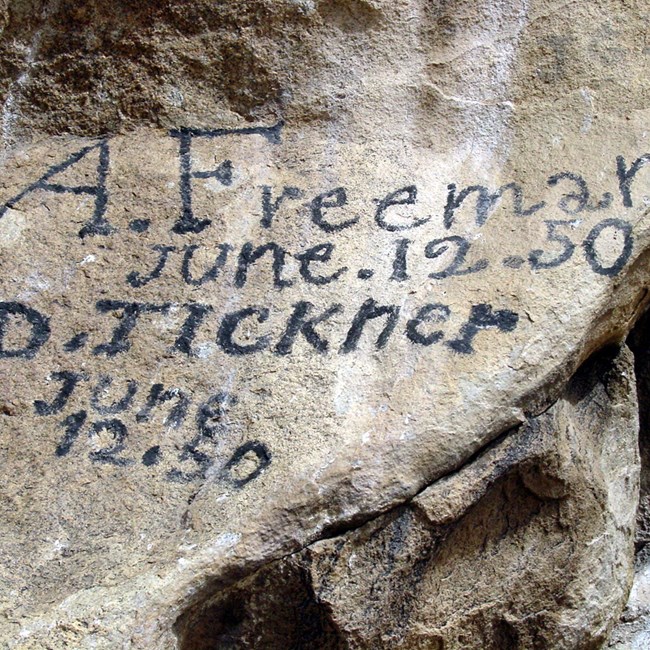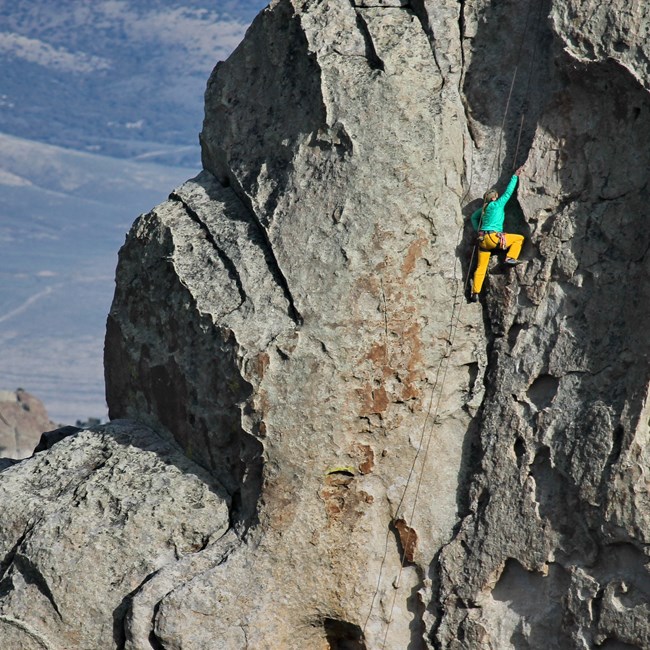Last updated: June 2, 2020
Article
Visiting City of Rocks National Reserve

NPS/Wallace Keck
Its secrets are told through oral traditions of the Shoshone people, through inscriptions and journals of California-bound migrants, or in the crumbled ruins of a pioneer’s house. The land still speaks, from the echoes of children’s laughter around a family campfire to the shout of a climber, “on belay!” City of Rocks refuses to speak only one language; its inherent values are understandable to all who come.

NPS
Today the partners work to preserve the story and artifacts of the California Trail (1843-1882), including views and landscapes, ruts and signatures. A self-guided driving tour booklet and interpretive wayside exhibits help to tell this nationally significant story of European-American migration into the homelands of the Shoshone and Bannock people. City of Rocks was also a place of rest and recreation long before it became a climber’s destination. Generations of local residents played, picnicked, hunted, and camped here. The Reserve has also become an outdoor classroom to study some of the oldest exposed rock west of the Mississippi River. Scientists are also discovering that the Reserve is uniquely located at a biogeographic crossroads, where plants and animals of three ecosystems collide.

NPS/Wallace Keck
For additional information, or to check the availability and hours of visitor services, visit the City of Rocks website at nps.gov/ciro.
